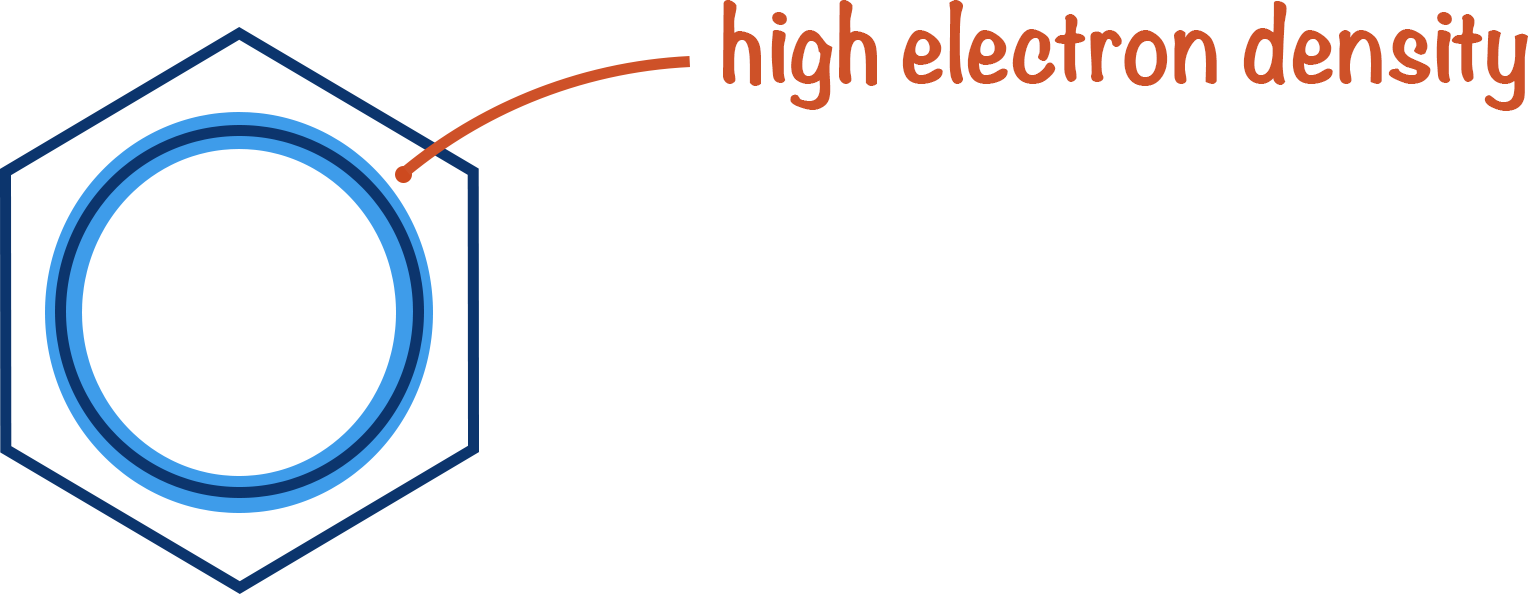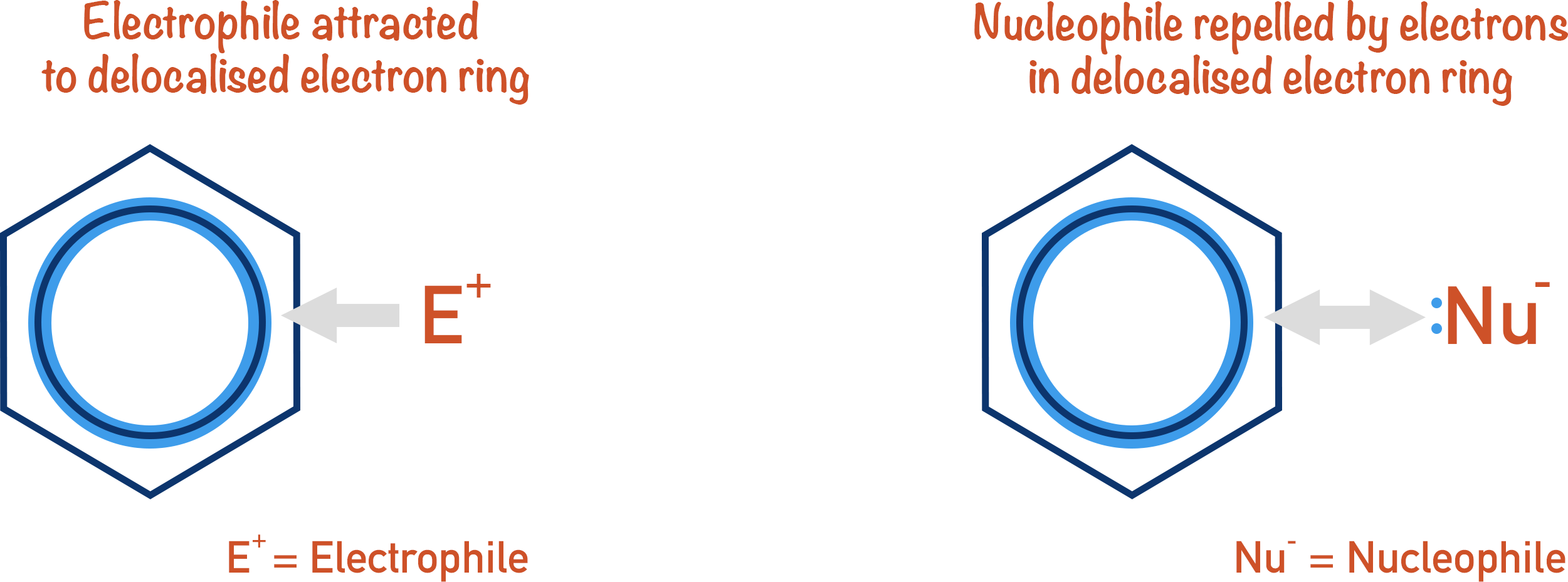Video Tutorial Benzene Reactions
Quick Notes Benzene Reactions
- Electrophiles (electron deficient species) are attracted to the ring of delocalised electrons in benzene; nucleophiles are repelled by the delocalised electrons.
- Benzene reacts with strong electrophiles.
- Electrophiles react with benzene in electrophilic substitution reactions, forming a bond with a carbon atom in the ring and forcing the hydrogen atom already bonded to the carbon atom to be lost.

Full Notes Benzene Reactions
Benzene has a ring of delocalised electrons that represent a region of high electron density (see Benzene Structure). Electrons are negatively charged, so electron deficient species (electrophiles) are attracted to the high electron density of the delocalised electron ring.

In simple terms, positively charged species are attracted to the ring in the middle of benzene as it contains lots of electrons.

Species that want to donate electrons (nucleophiles), or have a negative charge, are repelled by the delocalised electrons. This is why benzene does not react with nucleophiles, only electrophiles.
If you want to add something to a benzene ring, it needs to accept electrons. This is the basic principle behind all benzene reactions. Benzene reacts with electrophiles in electrophilic substitution reactions.
It is essential you get comfortable with the following mechanism before trying to tackle specific reactions involving benzene.
Electrophilic Substitution of Benzene

An electrophile accepts a pair of electrons from the ring of delocalised electrons, forming a new bond with a carbon atom.

This removes one electron from the delocalised ring, making it positively charged.
Only one electron counts as being ‘removed’ from the ring as one of the electrons in the ring ‘belonged’ to the carbon atom in the first place.
The delocalised ring needs another electron to become stable again. To get this electron, the carbon-hydrogen bond from the reacting carbon breaks, and an electron goes to the ring of delocalised electrons.

A positive hydrogen ion is released (proton), and the original electrophile is now bonded onto the benzene ring.
The hydrogen has been substituted for an electrophile, making the reaction an electrophilic substitution.
This basic mechanism should be fully understood – it forms the basis of the benzene based reactions that you will come across at A-level chemistry. The only differences will be the electrophiles that substitute onto the benzene ring and how they are formed.
We’ve launched our new site! 🎉
Course-specific notes with built-in search!
AP • A-Level (AQA • CIE • Edexcel • OCR) • IB • NCERT 11 + 12
over 750+ new pages and 3,500 images.
Visit the new homepage
